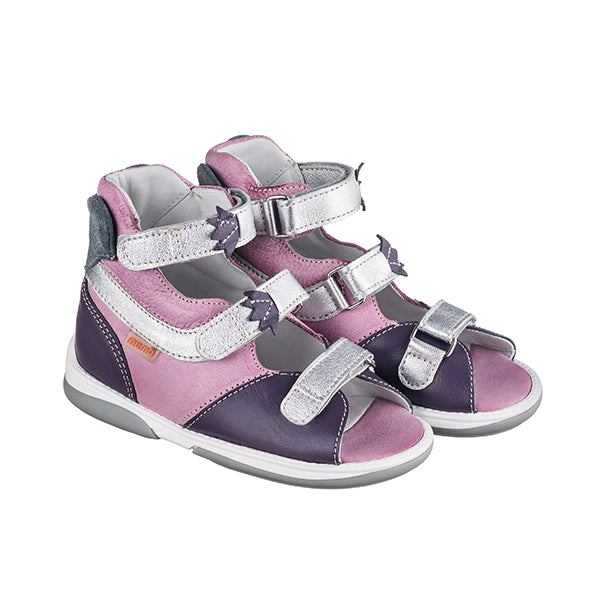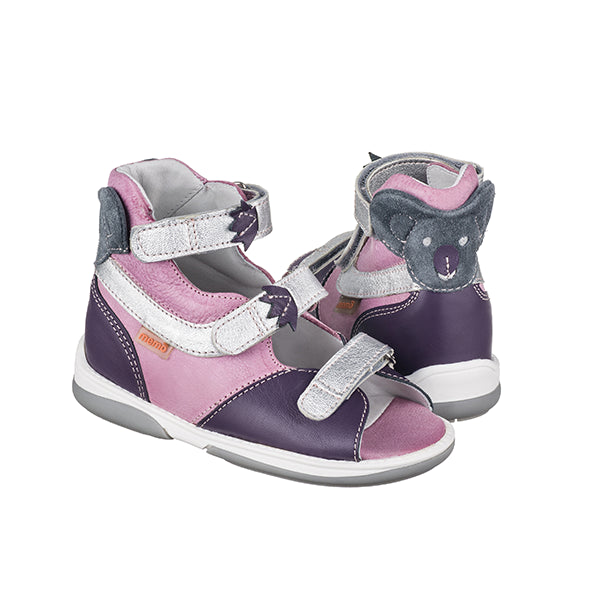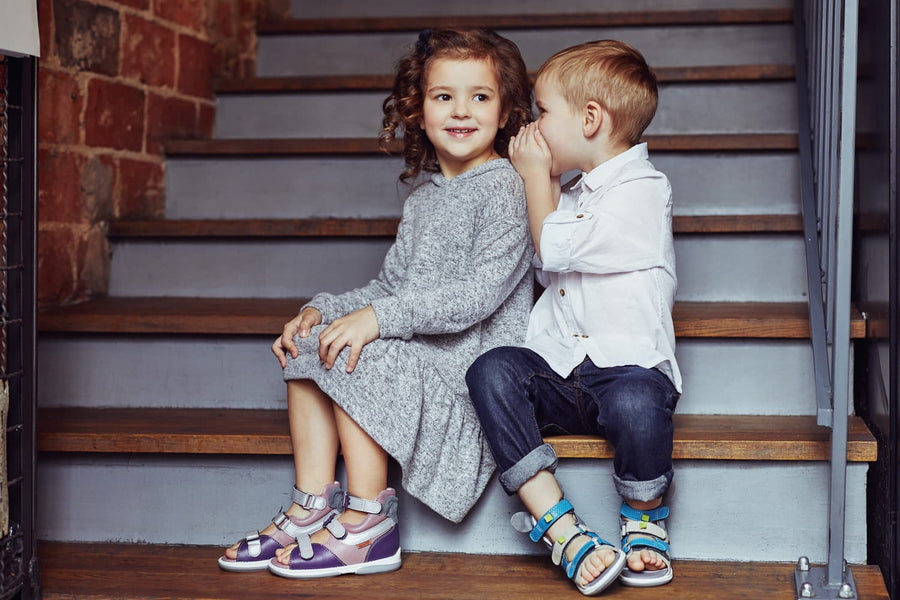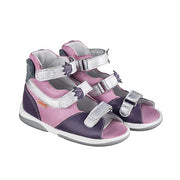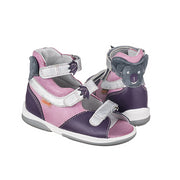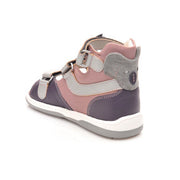Memo girls Toddlers + Junior, leather sandals /diagnostic sole /colour Purple - pink, KOALA 3NA
€63,70
€91,00
DESCRIPTION
Sandals with a high-cut upper made from natural raw materials, soft goatskins and high-quality nubuck leather. It has a stiffened thermoformable heel and a the Memo diagnostic sole. Footwear adapted for orthopedic insoles.
The shoes from the Mammal Collection are equipped with a Memo diagnostic sole.
The healthy Mammal Collection children's shoes are designed to be worn in kindergarten, at home or for a walk.
INSTRUCTION FOR USE
Performance characteristics of the product
Memo’s diagnostics area is its outsole and heel. They are divided into six numbered zones with cambered stripes. After wearing Memo shoes it is possible to access the degree of stripes abrasion. Insoles can be selected to correct the problem depending on which zone is worn. This abrasion can also be very valuable information for your Doctor, Consultant or Physiotherapist. After a correct insole is selected it is advised that the child should wear the Memo shoes as often as possible. The period of use for Memo depends on the child’s age and the intensity of the problem.
Diagnostic sole zones - the level/presence of clash of diagnostic elements
• Zone 1 - Abrasion in zone 1 means healthy feet. In this situation, Memo shoes act preventively.
• Zone 2 - Abrasion in zone 2 indicates using grey insoles and wearing Memo shoes. When wearing grey insoles abrasion continues in zone 2 then use an orange insole. If the abrasion area continues to be incorrect please consult your doctor.
• Zone 3 - Abrasion in zone 3 indicates using orange insoles and wearing Memo shoes. If inappropriate abrasion continues consult your doctor.
• Zone 4 - Abrasion in zone 4 indicates to use of orange insoles and wearing Memo shoes continuously. It is also recommended to seek medical advice as further intervention may be required.
• Zone 5 and 6 - If abrasion occurs in zone 5 and/or 6 seek medical advice.
Intended use
The need for stabilization and correction in the following basic diseases and diagnostics of the following diseases:
• length asymmetry of lower limbs,
• asymmetry of the feet,
• other biomechanical disorders of the hip joints,
• knee and ankle joints requiring correction/stabilization.
Usage
• Footwear should be put on and removed without lacing.
• Avoid getting your shoes In case of heavy soaking, the shoes should not be dried in the immediate vicinity of devices that emit heat. The shoes should be unlaced before drying. Inserting the paper inside the footwear will avoid the deformation of the shape.
• Footwear made of nubuck and velour leather is much less resistant to water.
• Do not wash leather shoes in the washing machine. Hot water, detergents, spinning deteriorate the condition of the footwear - it loses its original shape, appearance, and durability.
• Change the shoes you wear every day; it will allow the shoes to get rid of excess moisture.
• Footwear should be used as intended.
• Do not buy shoes that are too large.
WARNING
The maximum allowable footwear allowance should not exceed 1 cm.
Too large shoes do not fulfill their orthopedic function. Footwear should be adjusted to the foot in such a way, to ensure proper comfort of use.
The user or his carer should consult a healthcare professional if unsure whether the medical device is appropriate for a patient.
Footwear maintenance
Grain leather:
After cleaning the shoes, use colored pastes in accordance with the intended use and the color of the top. After the paste is absorbed into the skin, polish the shoes with a soft bristle brush or flannel until it is glossy.
Nubuck leather, velour:
After cleaning the shoes, use aerosol-impregnating agents to refresh leathers such as nubuck and velour, according to the color of the upper. It is not recommended to use pastes and creams

